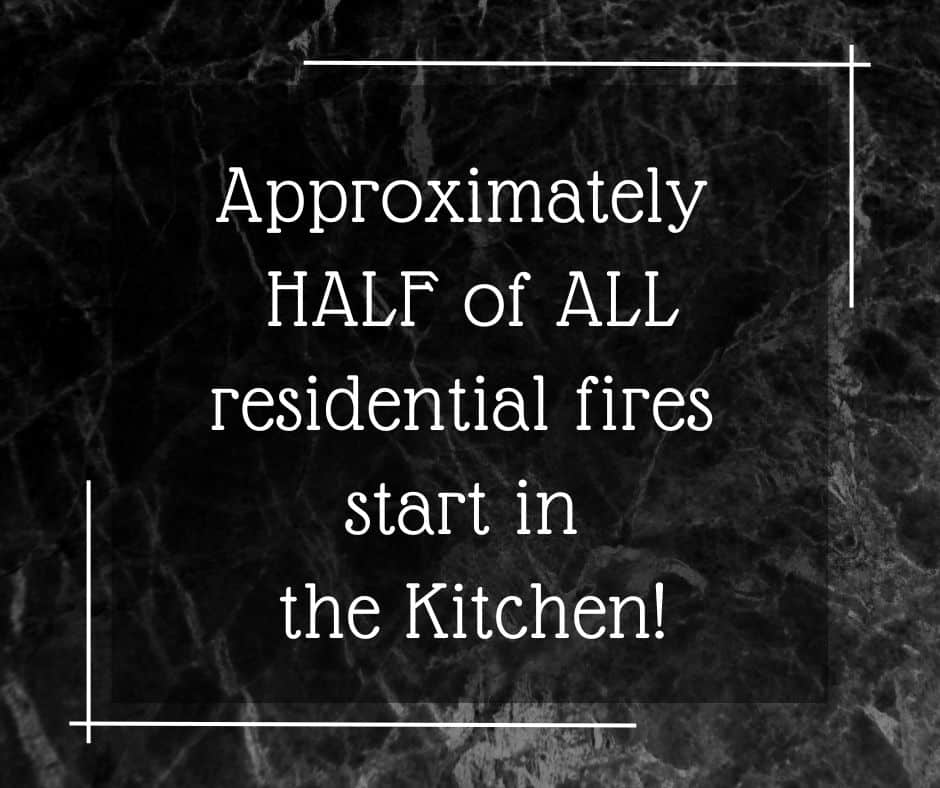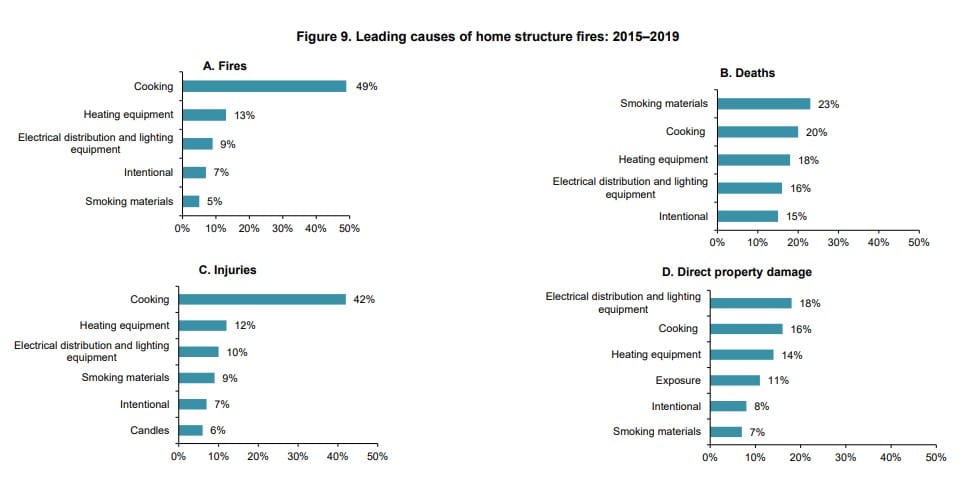Kitchen Fire Extinguisher | Reasons to Secure One Today
There are too many activities that qualify the kitchen area as a high potential location where fire could start. Because of this reason, it goes without shades of gray that a kitchen fire extinguisher is a prerequisite in your cooking space.
Statistically, an astronomical half percent of home fires are believed to originate from the kitchen. This happens either by leaving unattended food or when combustible materials are left too near the hot surfaces or flames.
The flip side to this could be managed by equipping your kitchen in order to be prepared when a fire emergency happens.

You may be coming from the bathroom, only to find flames starting to build up in the kitchen. What do you do? – call the police or the fire brigade? Shout? Run to the bathroom to get water only to reach there and wonder how to transport the water to your kitchen! Look helplessly as the sound, heat and smoke take over the place you call home?
It is these split seconds that you use to come up with a practical decision that matters!
Now, imagine if you have even the smallest of a kitchen fire extinguisher at hand! When used properly and at the right time, a fire extinguisher is a game changer.
Here, I must give emphasis that it is absolutely important that you understand what the different classes of fire extinguishers can do. I will briefly touch on that later on in this article.
Contents
Facts and Figures
Total dwelling fires in Great Britain stood at 33,400 fires while in the US, fire fighters responded to a whooping 361,000 residential structure fires in the last year.
About 3,000 civilians (persons other than the fire fighters) lost their lives in the said fires in the US and sadly another 500 fatalities were recorded in UK.

In both the two countries, it is agreed that close to 50% of the residential fires had their source in the kitchen.
Europe has also a heart wrenching estimated 5,000 fatalities last year due to fires.
The picture painted by these distressing statistics, all serve to show that residential fires remain a critical area of focus both in Europe and the US.
What time of the Year are Kitchen Fires Most Prevalent?
This is quite an interesting finding – there are more fire incidents around thanksgiving and Christmas! With the heightened cooking and celebration activities comes a compounded risk of burning down the house or sustaining burn injuries.
The other notable season when kitchen fires are record high is at the peak of winter. There is intensified use of carbon fuels around the home. This does not help the situation either!
During this time, fire authorities recorded the highest demand for their services falling in between 4 pm and 9 pm.
Key Practical Steps for Safe Cooking
I have been in situations where I left a kitchen or tablecloth too near the gas flames and luckily was on time to notice the little flames start to develop on the clothe.
Hence, be in no doubt that there are no flammable materials left near flames or hot surfaces. This includes no loosely fitting clothing especially towards the end of your hands,
You will also be doing yourself a favor if you form the habit of cleaning your kitchen surfaces regularly. Grease and fat can layer on top of this surfaces and become an easy source of fuel for fire.
Do not put tin foils inside your microwave as much as you are in a hurry or too hungry. With a little temperature rise, tin foils would easily ignite. In fact, avoid putting any metallic object in your oven.
A kitchen fire extinguisher will sure be cheaper than a home insurance. And I am certain that insurance will demand that you first install a home extinguisher as part of their risk mitigation measure. Why don’t you do before they ask?
Which is the best class of Kitchen Fire Extinguisher?
The best type of kitchen fire extinguisher is one rated for both grease and electrical fires. Typically, it is possible to find a fire extinguisher rated for class A, B and C.
This type of fire extinguisher is best suited for basic fires excluding metal and oil or grease combustion. For example, burning wood, paper, electrical arcs, petrol, and similar fires can be sufficiently be dealt with by a multi purpose class ABC fire extinguisher.
If you suspect that you may have frequent oil or grease fires (maybe you know that you deep fry a lot or your kitchen is super busy), we recommend that you also have a class F fire extinguisher.
You can read more about fire extinguishers in other articles on this website.
Some folks debate on the use of powdered fire extinguisher as they are afraid of the mess that may cause in the kitchen. Clearing the powder will definitely not be a fun thing to do!
Because of this, there is a preference towards a carbon monoxide fire extinguisher.
In my case, I prefer to have a fire blanket as well. The whole idea is to suffocate the fire as soon as possible.
While still considering which may be the best fire extinguisher for your kitchen, you may also want to think about the space available in the kitchen.
Kitchen spaces vary considerably and you would not wish to have a lot of your useful appliance space competing with a fire extinguisher.
Go for what you need and will fit in the space you have!
Conclusion
A kitchen fire extinguisher is a life saving equipment that is mostly affordable. Every able bodied member of the family should be familiar and trained on how to use it.
An additional safety measure that is highly recommended in the kitchen – this you may know very well – is the installation of an appropriate smoke or heat detector.
Bear in mind that your fire extinguisher will require annual inspection and replacement after 5 years.
Do not forget – always position your fire extinguisher where it can be easily seen and accessed.

